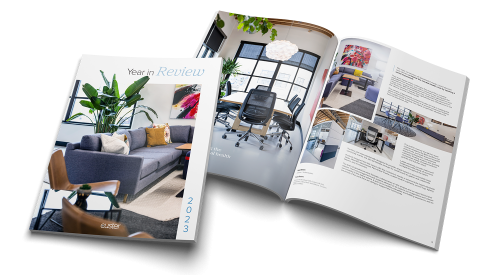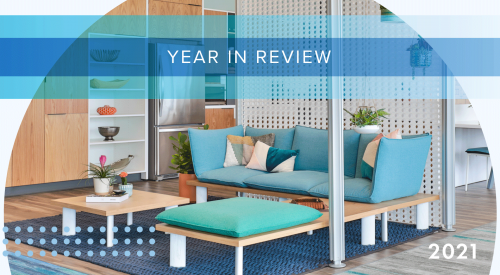- Blog
- Comfortable, Not Clinical: 5 Experts Share Tips for Designing Healing Environments
Comfortable, Not Clinical: 5 Experts Share Tips for Designing Healing Environments
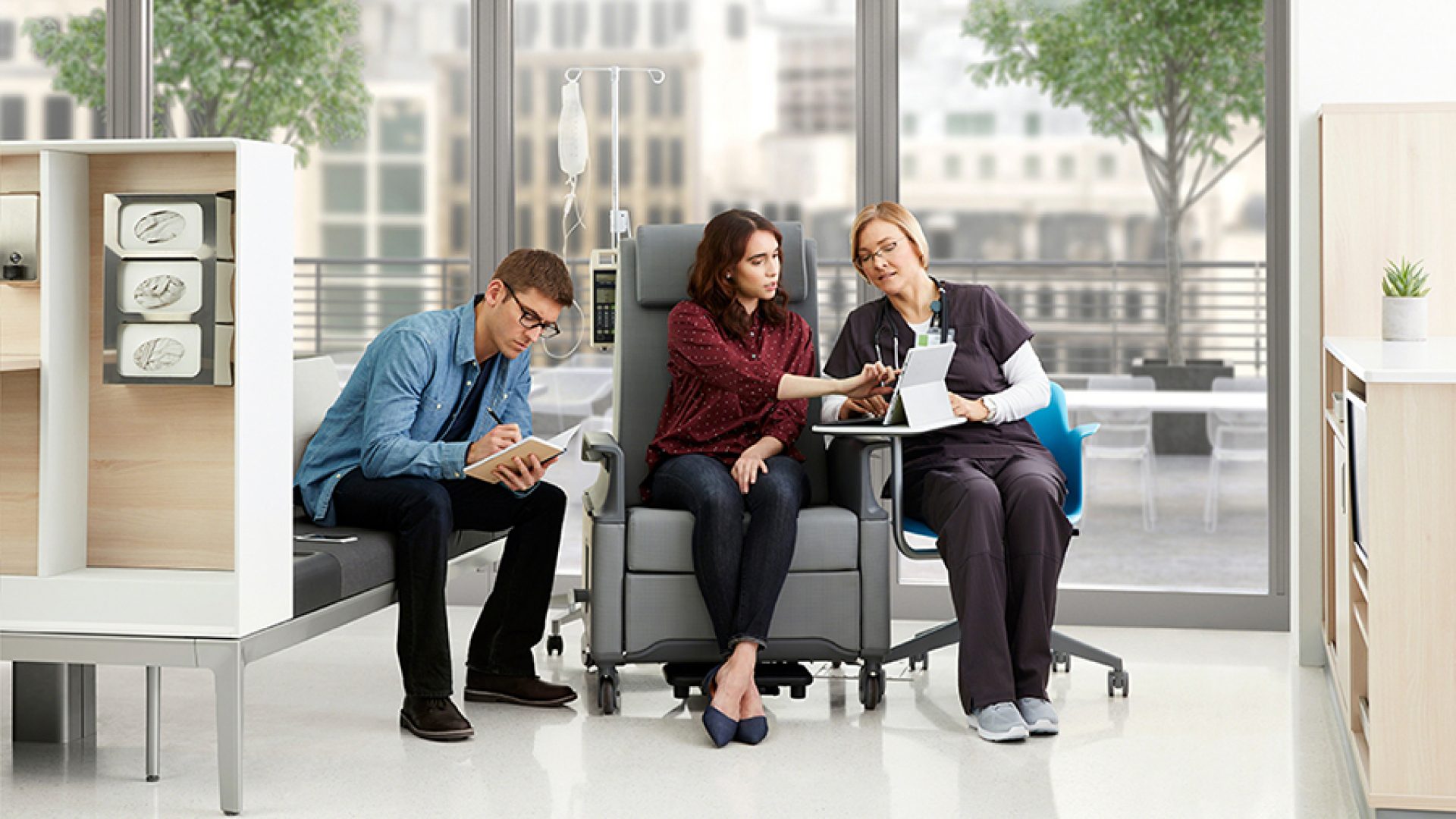
When you go to the doctor’s office, would you prefer being treated in a space that’s more clinical or comfortable? The clinical space might have a cluster of stiff waiting room chairs, an exam table with paper covering, and hallways lined with medical devices. On the other hand, perhaps the comfortable space incorporates greenery, exam chairs that look like your recliner at home, and an open perspective that also maintains your privacy. Given the choice, 99.9% of people would choose comfortable healing environments. Because when we find ourselves in need of care is usually when we need comfort and hospitality the most.
Accordingly, healthcare spaces are featuring more human elements that soothe patients, families, and caregivers. As this trend transforms our healthcare experiences, we asked healthcare experts to weigh in on the most important aspects of designing healing environments.
From your perspective, what do you think is the most important aspect in creating soothing healing environments?
Kelly J. Germay, Facility Development Coordinator, Bronson Healthcare Group:
Healthcare design has taken great cues from the hospitality sector to better patient satisfaction scores and provide environments that are focused on the health of their customer and community. There are so many layers that create this type of space, but a connection to nature is one of the most important. a patient who is healing, the overstressed healthcare worker, or the anxious family member waiting, the ability to connect with nature in some way has been proven to reduce stress and improve outcomes. Providing access to natural light is the best, but if artificial means can be achieved with artwork, textures and materials, indoor gardens, fabrics and lighting, those all go a long way to creating spaces that aid in the health of both patients and staff.
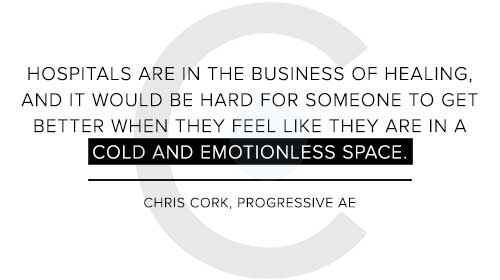 Chris Cork, Project Manager, Progressive AE:
Chris Cork, Project Manager, Progressive AE:
I would agree, the comment that I hear most is we don’t want the space to feel clinical. When you look up synonyms for the word clinical you come up with words such as, impersonal, antiseptic, cold, detached, disinterested, and emotionless. It is no wonder that hospitals don’t want to evoke the feeling of being ‘clinical’ when it brings up images of such disdain. Hospitals are in the business of healing, and it would be hard for someone to get better when they feel like they are in a cold and emotionless space. People tend to feel more comfortable in their own homes, so giving the space a more homelike or hotel feel tends to make people feel more comfortable.
In my opinion, what makes a space feel clinical is the hard sterile surfaces and finishes. I would recommend woods and natural materials, as well as more color. Give the space some life while maintaining a clean and safe environment. I believe that a person will heal much faster and better their chances of success if they feel they are in a warm and hospitable environment.
Stephanie Fortino, EDAC, Senior Applications Designer, Steelcase Health:
The most important aspect of creating a soothing clinical space is addressing the simple things.
First, you have to be mindful of what the patient and the family need in this space. This can vary from person to person and from situation to situation. When you are in times of stress or when you feel ill, simple comforts are very important. Being able to exercise even minimal choice and control is very important.
If you think of it in the context of Maslow’s Hierarchy of needs, the most fundamental needs for us all center around the physiological (esteem, friendship and love, security, and physical). If we design to address these basic needs, then we address the unspoken desires of the people in the space. So, the question is “how?” That’s what we must ask ourselves as designers every time we embark on a new design. Keep it simple and be mindful of the human element.
Melissa Powell Sheppard, Senior Interior Designer, Progressive AE:
As a designer, the easiest things to do are provide color, texture, and patterns that are more hospitality and residential in nature, design a place for everything so nothing stands out (like pieces of equipment, a monitor, or even a glove dispenser box), and provide a high level of control over lighting.
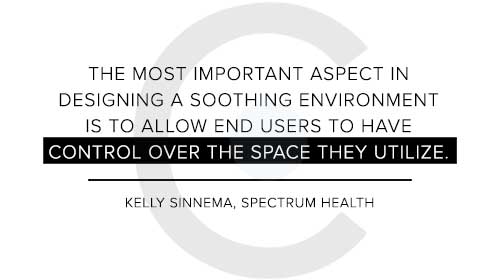 Kelly Sinnema, EDAC, Senior Interior Designer, Spectrum Health:
Kelly Sinnema, EDAC, Senior Interior Designer, Spectrum Health:
The most important aspect in designing a soothing environment is to allow end users to have control over the space they utilize. This gives a feeling of freedom through the ability to impact their surroundings and to make the space most useful for their needs. Many hospitable elements are used to achieve this. Incorporating design features that are influenced by the patient population and community puts users at ease. Different levels of user-controlled lighting, unique fixtures, and access to natural light have a huge impact on the perception of the environment. A mixture of furniture types that may not be perceived as “healthcare” allows for a variety of settings to accommodate user needs. By integrating these features, as well as others, this provides a flexible and comfortable surrounding for patients, family, and staff.
Are you in the healthcare design industry? Share with us your ideas for designing healing environments in the comments below!
